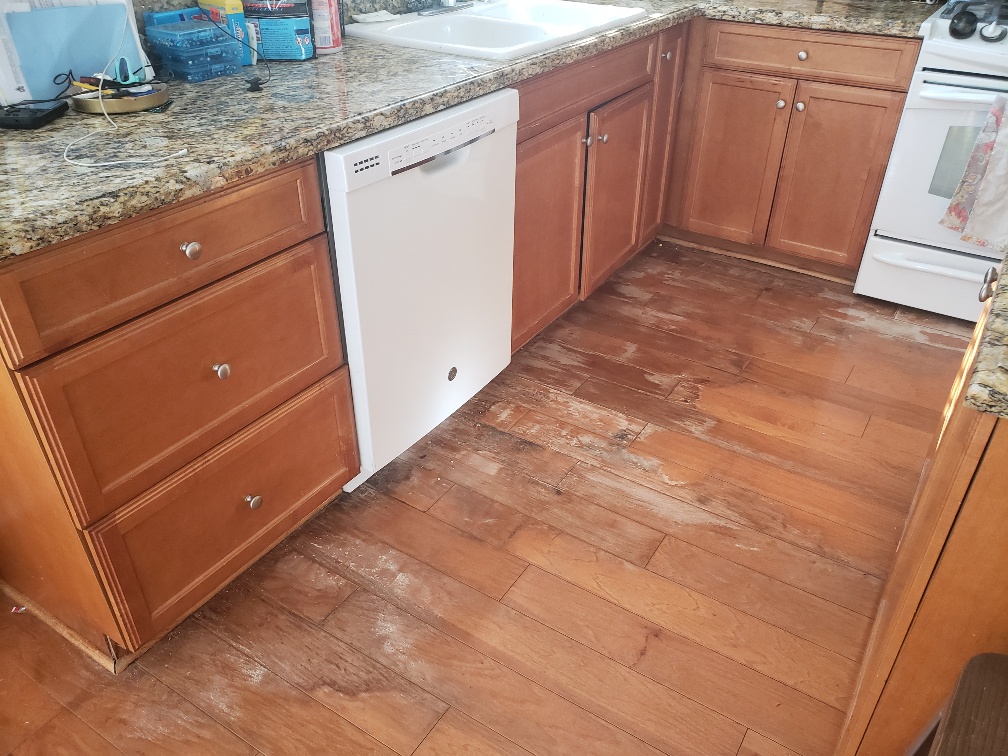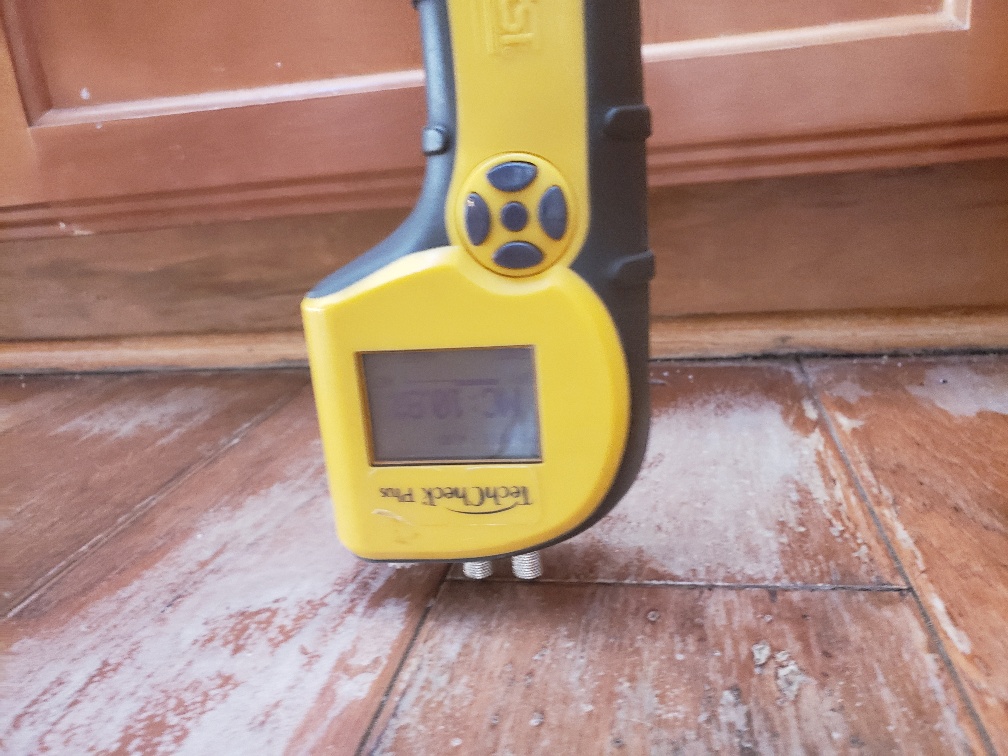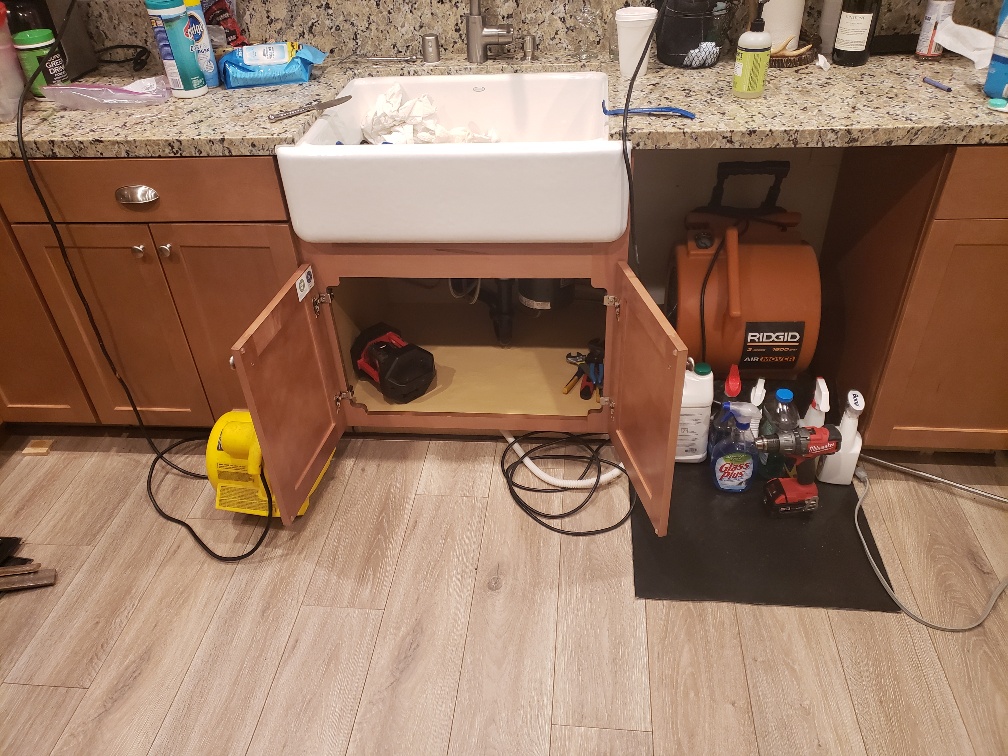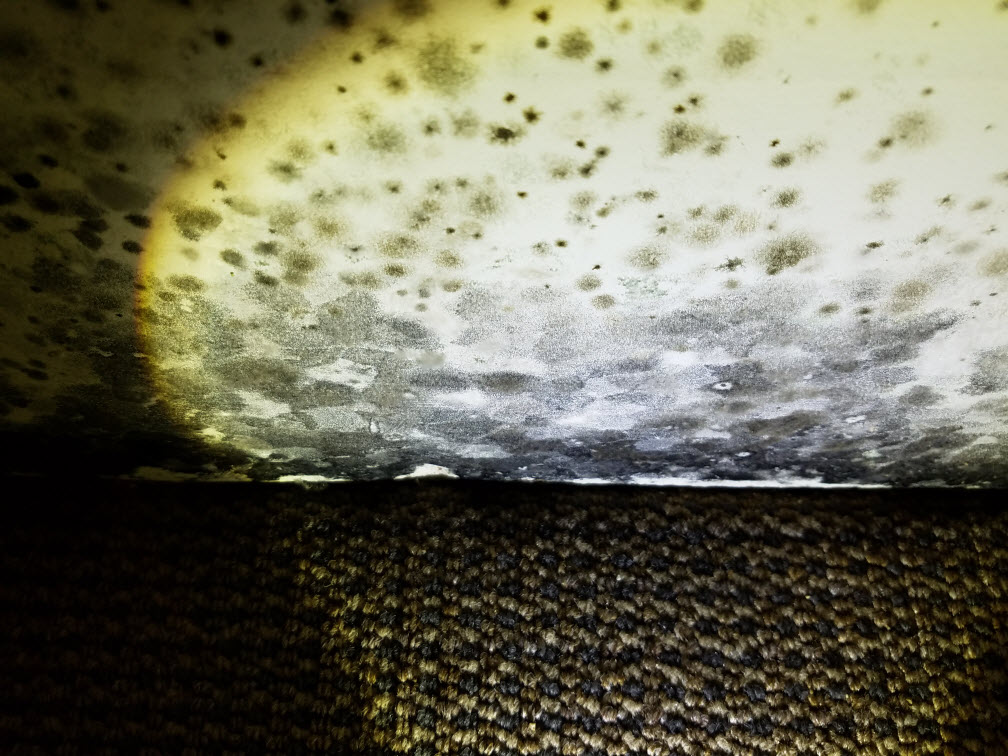(and What It Means for Dealing with Water Damage)
As a homeowner, it’s important to understand some basics about the materials that make up your home. By doing this, you’ll know how they react to environmental changes and hazards. How different building materials absorb water, and what that means for preventing and remediating water damage, is one area that many people don’t think about.
Not until they have a flood, broken pipe, or other water damage scenario. Rather than wait until those extreme circumstances, a little advanced knowledge can help you better choose building materials for your home construction or renovation. It is also better to prepare and know what to do if you suffer water damage.
Of course, building and materials science is an entire field unto itself. We’re not going to get too deep into the technical aspects of various calculations and coefficients involved in defining modern building materials. Instead, we’ll keep things general and basic so that everyone can better understand how water absorbs different building materials.
We’ll talk about the basics of water damage and how that intersects with the building materials’ physical properties that make up your home. We’ll also offer advice on things you can do to make your home more water-resistant and how to best recover from water damage.

Material Characteristics
Several material characteristics can come into play when discussing water and how it absorbs different building materials. Environmental factors also come into play, as material features often are subject to change under different humidity. But it can also be due to temperature, pressure, and related conditions.
On a basic level, some of the aspects of materials that determine how (and how much) water can absorb into building materials include:
- The density of the material (how closely the molecules are spaced)
- The porosity of the material (how many pores or holes are present in the material – think of a sponge compared to a solid block of plastic)
- Permeability of the material (how easily water can enter or exit the material)
- Whether or not capillary flow is possible, and to what extent within the material
- External and internal pressures on the material, and how they interact with water droplets
- Expansion, contraction, leaching, and other properties of the materials that dictate how they respond to absorbing or losing water
- External coatings and treatments of materials, that help prevent water from entering (but can also make it harder for water to evaporate out and leave the material, meaning drying can become more difficult, too)
- Various other properties including how rigid or flexible materials become when they absorb water, their propensity to deform or become brittle, lose structural or tensile strength, and so on.
It’s important to note that many of these properties are defined in laboratory tests, with a great deal more detail than presented here. These certifications are then included with the specifications for various building materials before they go on the market. For many products in the US, certain minimum specifications need to be met to be sold as a certain grade or quality of building material product.
It is also worth noting that none of these basic material characteristics directly talk about the propensity for material to grow mold, mildew, other fungi, bacteria, or any other harmful microorganisms due to water exposure or damage. It is not difficult, however, to conclude how materials will perform based on these characteristics – obviously, materials that are highly permeable, porous, and absorb large amounts of water are more likely to cause problems in a water damage scenario than those that are largely impermeable, non-porous, and don’t absorb moisture.
Three Key Factors
Rather than get bogged down in the technical aspects touched on above, we can really focus on three key factors that determine the kind and extent of water damage that can occur based on the properties of building materials. Specifically:
- How easy it is for water to get into a material.
- Another one is how much water can be absorbed, and what, if anything, that does to the material.
- Also, how easy it is for water to get out of the material.
These three factors or considerations encompass most of the different material properties discussed above. Also, they dictate a lot about how certain building materials will hold up in high-humidity or high-moisture conditions. It’s important to remember that not all “water” damage is necessarily caused by liquid water. Humidity, or moisture in the air, can also lead to water damage. This is especially true with highly absorbent, porous materials, and don’t let water out of the material quickly.
The Analogies
Of course, there are analogies to these factors as well. It may not be easy for water to get into a particular material in the short-term, but the damage can accumulate over a long period of exposure. Think, for example, of most kinds of wood used in the frames of a home. If you were to spill some water on a piece of wood, it’s not going to instantly absorb into the wood, swell up, bend or flex, or grow mold or mildew.
However, immersing a piece of wood in water (similar to what would happen with a flood situation in your home) is going to result in significant water absorption over a matter of hours or days. That water is going to deform and damage the wood seriously. It will also become a breeding ground for mildew, mold, and other fungal growth since water doesn’t flow out of wood easily.
Most wood in homes is present in poorly ventilated areas (e.g., behind drywall and surrounded by insulation). All of these factors add up to the potential for serious long-term damage.
This same logic holds true with almost all other forms of building materials used in the home today. The materials’ core properties intersect with the environmental factors and water or humidity exposure to define the likelihood and extent of water damage that can occur.

The Basics of Water Damage
Water damage usually occurs when a material absorbs water, is exposed to water or moisture in the air, and is not designed to occur. Generally speaking, the greater the degree of permeability, porosity, and absorption of the material, the more damage that is likely to occur in that material. Physical damage can occur to the material, including bending, flexing, cracking, breaking, buckling, losing structural integrity, and so on.
This is coupled with the more familiar aspects of water damage – mildew, mold, fungi, bacterial growth, and that sickly smell is usually given off my mildew. Rotting and similar damage can also occur to organic material that suffers water damage, such as wood, fiberboard, and similar materials.
Some of this damage can happen right away, from the actual penetration of the material by water and the resulting absorption and reactions. Other damage takes longer to develop and results from the continued presence of water or the material’s poor drying over time.
Most microbial growth takes a bit of time, days to weeks, in most cases. In contrast, structural damage like warped or bent wooden beams cracked bricks or concrete from swelling, and other physical reactions tend to happen within a few hours to days of the initial water damage.
Putting It All Together
Naturally, no one wants to deal with water damage in their home. Whether from a flood, broken pipe, overflowing washing machine, broken drain hose on a dishwasher, torrential rain, overflowing gutters, a leaky roof, or just repeated high humidity (such as in a bathroom), water damage can be devastating and damaging to your home.
The microbial growth that can occur following water damage can create serious health threats to individuals living in your home, and might even make it unlivable without serious remediation. Minimizing the potential for water damage to occur is obviously critical, though not all events are under your control. Therefore, it’s useful to take a two-pronged strategy.
First, you’ll want to ensure you (or your builder) select water-resistant building materials, especially for certain areas of your home. This can apply at the time of initial construction or as part of any upgrade or renovation project you might undertake. Second, you want to understand the basics we’ve discussed in this guide regarding how water absorbs into different materials and how to spot the signs of water damage. You can then make the best choices to deal with that water damage and minimize the lasting negative effects that it can have.
What You Can Do During Construction or Renovations
One of the easiest ways to reduce the potential for water damage in your home is to ensure it is built with water-resistant materials or materials that aren’t prone to absorbing water. Minimizing permeability, porosity, and absorption properties – especially in areas like basements, bathrooms, laundry rooms, and areas that are likely to experience significant humidity or moisture – is simple and effective.
- Choosing water-resistant materials may come at an extra cost in some cases and is not always under your control. When possible, however, it’s usually worth the extra cost and effort. Examples of water-resistant flooring materials include sealed concrete, non-porous stones or tiles with waterproof mortar, rubber, plastic, synthetic tiles or laminates, plastic lumber, and epoxy polyurethane-based materials. Carpet, porous tile, and hardwood floors should be avoided.
- When it comes to wall materials, steel, cement board, brick, cast stone, glazed tile, concrete, vinyl, aluminum, and similar materials are all viable options. Common wall materials, including drywall and some kinds of paneling, are highly absorbent and often are the first things that need to be torn out and replaced when water damage occurs.
- Even if you don’t have an option to choose materials when your home is being built, there are steps you can take after-the-fact to increase water resistance and decrease the likelihood of water damage. Treating various flooring materials with sealers or sealing compounds can greatly reduce their permeability.
- Replacing existing tile mortar with a waterproof variety, and adding vinyl runners along the baseboards, can help contain accidental water damage, such as an overflowing toilet or sink. Having drains built into tile floors, where practical, is another great way to contain and prevent water damage in your home.

What You Can Do After Water Damage Occurs
If water damage does occur, however, there are still steps you can take to minimize and recover from the damage. General advice in this area includes:
- Removing and draining any standing water is a necessary first step.
- Carpet and other flooring materials are usually a loss in these cases, and should be removed (you may want to consult with an expert first to be sure).
- Drywall and other absorbent wall materials will typically need to be replaced, in whole or in part.
- Ensure sufficient ventilation to promote drying as soon as possible. It may not solve your problems, but sufficient airflow will help evaporation and decrease the extent of the damage.
- Don’t wait for mold, mildew, or other nasty microbes to develop and become visible. Consult an expert inspection company to get a handle on residual moisture content, what may or may not need replacing, and what additional steps you can take to recover from damage.
- Also, don’t forget to apply for insurance claims if you have insurance for the particular incident that occurred, as this can help with your inspection, remediation, and recovery costs.

Getting Help from the Pros
One of the best things you can do to recover from water damage, regardless of the scope or scale, is to contact a professional inspection firm. They can help to identify any microbial growth – before it spreads. Also, they can measure moisture content in the various materials that have been affected.
Moreover, they provide guidance on how best to handle the situation. In many cases, they can point you to qualified remediation firms that will help you get things back under control.
Hiring a qualified inspector will help prevent a serious water damage situation from turning into a potentially life-threatening one. They can do this by avoiding the growth and spread of mold, mildew, and fungus in your home.
In the greater Los Angeles area, your best choice of inspection companies is FunGuy Inspections. They’re experienced, knowledgeable experts with the equipment and skills to help you recover from any water damage event. They can also provide guidance and information on remediation, materials selection for replacement of damaged materials, and much more.
Have you just experienced water damage, or suspect a long-growing mold or mildew problem? Contact FunGuy Inspections for fast service, expert advice, and actionable results.
